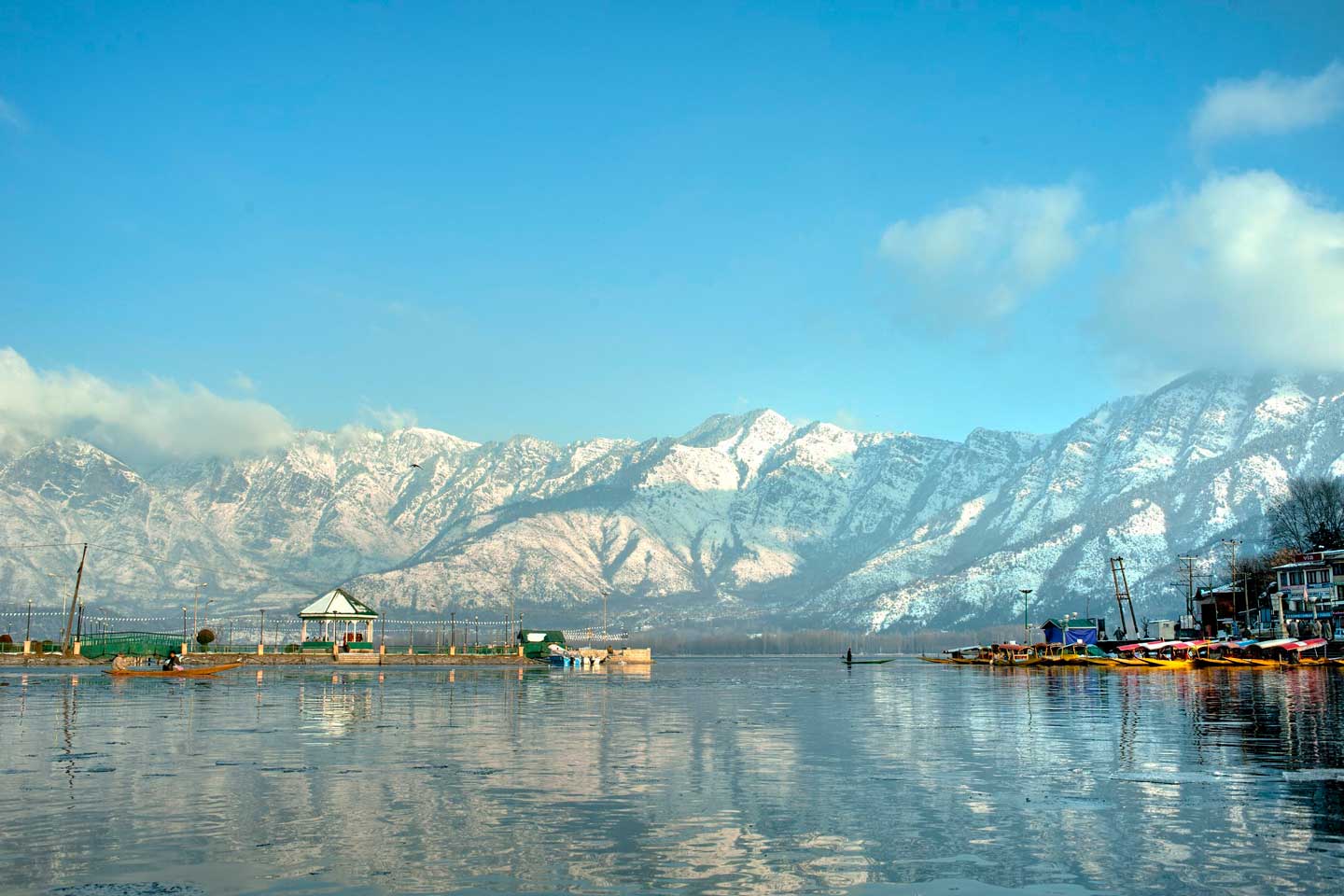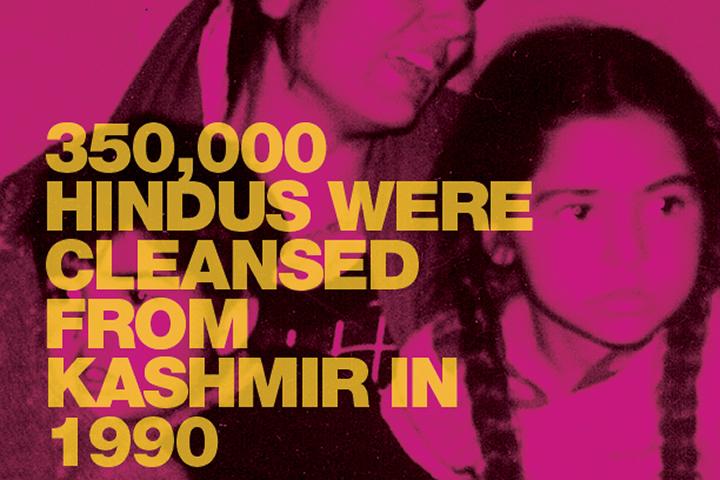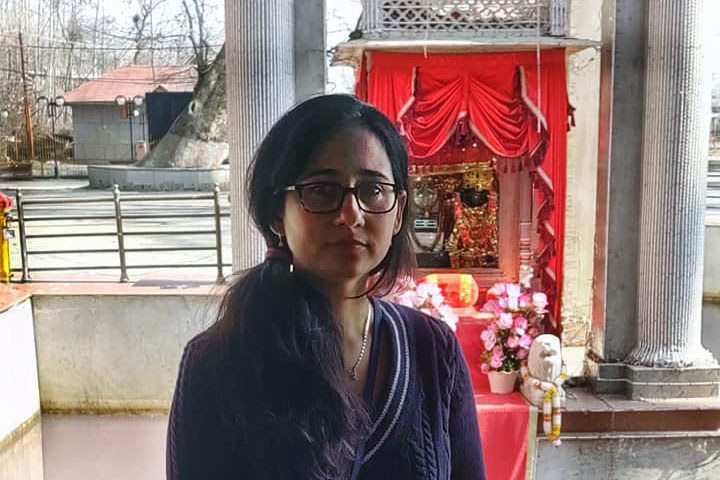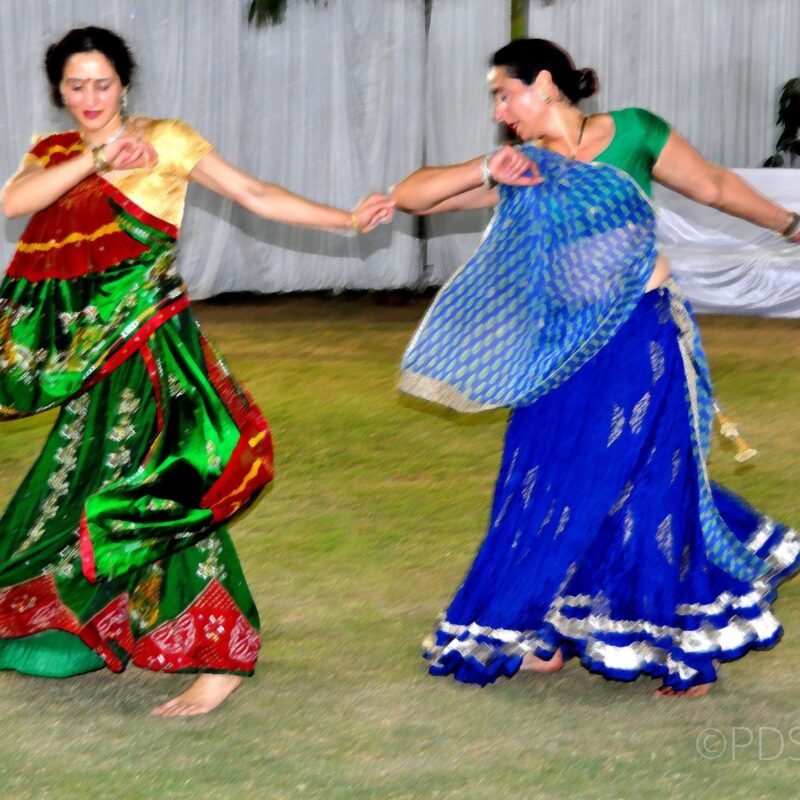
One year ago the Government of India (GoI) took the decisive step to repeal Articles 370 & 35A of the Indian Constitution, fundamentally changing the relationship between the then state of Jammu and Kashmir and the rest of India. The former state became two Union Territories — Jammu and Kashmir, and Ladakh — with some aspects of government being run directly from Delhi.
We asked a selection of leading Kashmiri Hindus, also known as Kashmiri Pandits (KPs), about what’s happened in the past 12 months and what they hope to happen in the future for Kashmir. Here are their answers.
Describe the moment you heard that the Indian Parliament had repealed Articles 370 & 35A of the Indian Constitution?
Nisha Quasba (Kashmiri Youth Leader; Washington, DC): I was at work and I got a text through a group chat of my KP friends saying something along the lines that Article 370 was removed.
In the current times of misinformation, I was in disbelief and denial.
Instead of replying with a celebratory message, I quickly did a Google search to verify. I was shocked to find news outlets all over India flooded with the top headlines confirming Article 370 was indeed abrogated.
My immediate thought was that the impossible happened, but also not completely grasping the breadth of what that meant for the ground reality policy changes that this would trigger.
For the better part of my morning I was reading furiously different news articles covering the monumental event. I went to the feeds of KP journalists I had been intermittently following for years to hear their take on the state of affairs and their observations. I had a few colleagues approach me asking me what all the buzz was about in India since leading US outlets like New York Times and Washington Post had picked up the news as well. It was a day full of excitement, questions, curiosity, and a ton of reading.
Dr. Vijay Sazawal (International Coordinator, Indo-American Kashmir Forum; Potomac, Maryland): I was having my breakfast and put on the Indian TV (India Today). I saw Mr. Amit Shah, the Union Home Minister, speaking in the Raj Sabha and the news banner at the bottom said that the discussion was being held regarding the removal of Article 370/35A. I could not believe it. I had expected some administrative changes because of the rumors going around in the valley before this date but this action took me by surprise.
Dr. Rajiv Pandit (Physician and Board Member, Hindu American Foundation; Dallas, Texas): I was with my family in a remote location in Africa, with virtually no internet connection, celebrating my 50th birthday.
I kept receiving fragmented messages saying things like “Congratulations”, “It’s finally happened”, “historic day”, “unbelievable”. I felt that these were a bit too dramatic to describe my birthday, so I figured something else was going on, like maybe someone a family member or a close friend had won a special award.
It wasn’t until one week later, when I finally had a stable internet connection, that I read the headline “Article 370 revoked in Kashmir”. I was stunned. My family asked me why I froze.
Yet my mind was racing. In one fell swoop 70 years of Kashmir’s stagnation and quagmire was gone, 30 years of the KP exodus could get rectified, rampant corruption would come to a halt, and the beauty of Kashmir’s land and people would see a resurgence.
Aarti Tikoo (Journalist; New Delhi/Kashmir, India): I got off the plane from Delhi to Srinagar and the first thing I heard at the airport from a colleague was the biggest news of my life—Article 370 and Article 35A had been nullified and J&K had been bifurcated into two union territories. I was hit by a whirlpool of thoughts—I began thinking what the reaction of Pakistan, Kashmiri separatists, soft-separatists and terror groups would be. I began thinking what the news headline will be, who all I needed to visit and talk to, without a phone or internet since the government had imposed a communication blockade. It was much later I began thinking what it meant to me personally, my family, the memory of my dead grandparents who died in the grief of losing home and their whole world. We were driven out in 1990 when I was an eighth standard kid. Nobody in the family wanted to go back but I did go as an adult and a journalist after a gap of 12 years in 2002. But from 2002 till 2019, whenever I visited Kashmir, I always felt like a stranger in my homeland. There was no acknowledgment from Kashmir’s civil society and the educated class that we had been wronged. So I always felt like an outsider, an unwanted tourist in Kashmir. But on August 5, 2019, I felt I was home even as I began wondering if my sense of belonging had been granted at the cost of someone’s sense of loss. I felt reassured that I had not impinged on anyone’s rights or feelings when half a dozen Kashmiri Muslim friends told me privately the same day that they were as happy and relieved as I was. I can’t mention their names because they still face threat to their lives from Pakistani terror groups in Kashmir. For them, it was an end to the confusion and ambiguity Kashmir had lived in seven decades.
Following the repeal, what concerns did you have? Do you still have those concerns today?
Nisha Quasba: My immediate concerns were how the separatists and their followers will react to this action taken by the GoI. I knew there would be immediate opposition, as this move goes completely against any of their efforts to attain independence. Knowing the past decades of history of Kashmir, such types of actions are faced with great mounds of violence, attacks, and gruesome killings of innocent people. My concern then was that the number of deaths will substantially increase and peace – which is the ultimate goal in the valley – will never be reached. I continue to have those same concerns today.
Dr. Vijay Sazawal: My concerns had more to do with violence that would erupt in the valley, in spite of the curfews, etc. The mainstream politicians had historically alleged a bloodbath if such a change was made and renewed that threat many times in the days preceding August 5. Fortunately, the announcement created such a shock factor among the population that there was literally no violence in the streets. Locals told me later (I visited the valley post August 2019) that the shock had more to do with a loss of statehood rather than removal of the 370/35A, which was part of the BJP election manifesto.
Dr. Rajiv Pandit: I am concerned that forces that don’t want peace in Kashmir will ramp up efforts, such as terrorists and unfriendly neighbors. I am concerned that, as sweeping as this move was, it won’t translate to on-the-ground improvement in the rights of minorities, reclaiming property, building trust between communities, security, and economic development. Yes, I still have those concerns, since covid-19 has hampered the government’s ability to move ahead as fast as was hoped. Then there is China…
Aarti Tikoo: My biggest concern was the street violence and rioting of the nature that Kashmir had witnessed in 2016. The separatists sponsored by Pakistan in Kashmir had orchestrated massive violence in 2016 when Hizb commander Burhan Wani was killed in an encounter by the security forces. It was painful to see young kids getting killed and injured during those clashes. This concern has been largely addressed. Street violence, stone-pelting and rioting have drastically dropped in Kashmir.
Following the repeal, what were your hopes and expectations? Have they been met? If not, why do you think?
Nisha Quasba: I thought a year post abrogation, after all the news buzz had moved onto the next topic and the initial shock had faded that some level of peace would return to the valley. That hope I still have today though it has not been met. I do not think Kashmir even a year later has progressed from the angle of reconciliation, healing, or peace building efforts. I hope moving forward there can be a civil dialogue between the Kashmiri people and the central government to pave a path forward that makes Kashmiris feel that they are Indian and part of the subcontinent culture which it has been for hundreds of years.
Dr. Vijay Sazawal: It is too early to talk about meeting any “hopes and expectations” given that it has only been a year out of which covid has taken half the time. But I am disappointed that the central government has not made any statement about Kashmiri Pandits and their return to the homeland. A road map and a time schedule is long overdue.
Dr. Rajiv Pandit: Terrorism is down, and the government is making sincere efforts to bring in jobs, development, and confidence-building measures between the government and the people. More work needs to be done for economic development, and removing extremist ideology. Many people are still afraid to speak due to threats from terrorists.
Aarti Tikoo: My hope was that there will be spectacular development in the most backward areas of Jammu and Kashmir. My expectation was that the street violence in Kashmir will go down and the government will announce a proper plan for the return and rehabilitation of Kashmiri Pandits. Except for the significant drop in the street violence, I haven’t seen ANY spectacular development on any of the fronts yet but I am willing to give the government benefit of doubt because in the last one year, six months have been wasted in the coronavirus pandemic and the related lockdown. The previous six months were spent in trying to prevent and counter the violence perpetrated by Pakistan sponsored terror groups in Kashmir.
How do you view the western media coverage of the repeal of Articles 370 & 35A since Aug 5, 2019? Does this media coverage reflect your own experience as a Kashmiri Pandit? Do you see any changes in the media coverage in the last few months?
Nisha Quasba: I believe the western media turned the Kashmir story into something that was palatable and relatable to the American viewership by drawing fallacious parallels between the two governments and making comparisons that were historically inaccurate to peddle a specific point of view.
It conveniently ignored the plight of Kashmiri Hindus because by doing so it would paint the “self-determination” movement not as a peaceful struggle, but what it truly is: a movement to create a theocratic state which no western reader would agree with. To keep the story sympathetic to the separatist, the article pieces that came out focused solely on the actions of the GoI and never spoke to the violence and atrocities the “self-determination” clan had caused to the average Kashmiri resident. By showing a lopsided count of events, the articles nudged a viewer to get a very black and white view of the geopolitics of the region and not show the full picture.
Dr. Vijay Sazawal: Western media has played its nefarious games in so far as highlighting only negative and one-sided and, in many cases, incorrect portrayal of the situation in Kashmir. As I mentioned earlier I visited the valley after August 2019. I found that in spite of my first hand reports which I shared with journalists, the media was unwilling to be objective and balanced in its reporting. I am sorry to say that US Presidential politics also poisoned the waters and Democrats are taking a generally negative point of view regarding the [Indian] central government action in Kashmir. I was personally shocked when my eye-witness reports were not deemed as credible as the US media reports by a key staff member of a Mid-Western State US Senator who in the past has been vocal in his support for Kashmiri minorities (Pandits).
Dr. Rajiv Pandit: The Western media and reality are as opposite as night and day. What I hear from people in J&K is entirely opposite of what the media is reporting. In the west, US and UN designated terrorists are referred to as “rebels”. In fact, the role of terrorism, as well as the corruption and ineptitude of previous federal and state governments, are almost entirely missing from Western reports.
Aarti Tikoo: The Western media has no historical understanding and knowledge of the Kashmir conflict, let alone the intricacies of the Indian constitution related to Kashmir. The Western media coverage has largely remained sympathetic to the Pakistani point of view on Kashmir. It remained true to its tradition by publishing and broadcasting lopsided view on the nullification of Articles 370 and 35A and on Kashmir in the last one year. If you see their gloom and doom predictions they made last year about Kashmir, none of it came true. I haven’t come across any substantial change in the media coverage in the last few months.
What recommendations do you have for the people and government of J&K and what would you like to see happen next?
Nisha Quasba: The people and the government need to start talking productively together. There needs to be an end to external nations and entities funding the movement that has left thousands dead and a valley plagued with unemployment and a plummeting economy. Development needs to come to Kashmir that is strategically mapped out with all stakeholders accounted for.
Dr. Vijay Sazawal: The biggest reason why our organization, and our sister organizations, the Indo-European Kashmir Forum (IEKF) based in London and Geneva, and the Indo-Canadian Kashmir Forum (ICKF) based in Ottawa, support the decision by the Government of India is because finally Kashmiri minorities, particularly the Kashmiri Pandits, will receive justice and be able to reclaim their ancestral lands from where they were driven out in 1989-1990. The ethnic cleansing of Kashmiri Hindus from Kashmir valley is a disgraceful chapter in the history of free India, and it happened because all successive democratically elected Kashmiri Muslim politicians in Jammu and Kashmir took an umbrage under the Article 370 to resist any Central Government efforts to address the plight and suffering of Kashmiri Pandits and other minorities in the State and reverse their ethnic cleansing. Pandits have been living as refugees in their own country for the last 30 years.
The move by the Indian Government will also improve the security situation with respect to cross border terrorism and bring peace, harmony and stability in Jammu-Kashmir, now a new Union Territory of India.
I may add that the security situation is already improving in the State.
Dr. Rajiv Pandit: My recommendations are:
- Find a way to get 4G and limit separatist activity. The government has had 12 months to do it. The long term impact on development by this is greater than any other economic investment the government can make. It also builds resentment, even by people in Jammu.
- Rebuild trust. More positive engagement between police forces and the people. The Public Safety Act minimizes accountability. It needs to be modified. Not everyone in Kashmir is a terrorist. Most are actually fine with India.
- Report who is missing and/or detained.
- There continues to be corruption, seriously hampering the economic outlook for the rural, agricultural population, whose livelihoods were decimated by the lack of business (like purchase of their apples) due to the abrogation and the threats by terrorists.
- Find better representatives of the Kashmiri people than the current lot, some of whom have baggage and are known opportunists.
Aarti Tikoo: For people in Kashmir, I would like to urge them as their well wisher that they should not fall for any of the promises of reversal of the August 5, 2019 decision. Any local politician or separatist who is trying to sell them this idea is essentially hoodwinking them as they were for the last seven decades. They have a bright future ahead as citizens of democratic republic of India. They have the same rights as other citizens and they can accomplish and enjoy whatever any other citizen of India is entitled to. Its time for Kashmiri society to reject violence and terror unequivocally and move on. For people in Jammu, I would like to urge them to get prepared to compete with the businesses of Punjab and the rest of India. I would like to see rapid development in Udhampur, Doda, Baderwah, Kishtwar, Ramban, Rajouri, Poonch, Kupwara and Handwara areas of Jammu and Kashmir. I would also like the government to bring in a legislation on the prevention of ethnic cleansing and genocide of Kashmiri Pandits before a blueprint of their return and rehabilitation is prepared. In addition, I would like to see the government making efforts to secularise education in Kashmir where religious radicalization remains a major challenge.








































